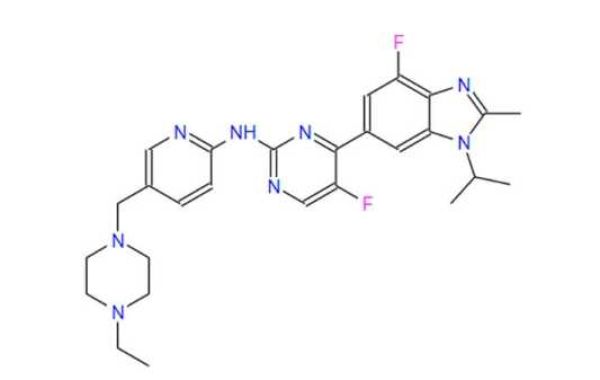The Birth of an Idea: The Science Behind Abemaciclib
Abemaciclib belongs to a class of drugs known as CDK4/6 inhibitors. These drugs target cyclin-dependent kinases 4 and 6, proteins that play a crucial role in cancer cell growth. By inhibiting these kinases, Abemaciclib disrupts the uncontrolled proliferation of cancer cells.
Building the Blocks: The Synthetic Journey
The synthesis of Abemaciclib is a complex and multi-step process. Scientists have tirelessly worked to optimize a route that is efficient, cost-effective, and scalable for large-scale production. Here's a glimpse into some key steps:
Crafting the Core: The process begins with the creation of key intermediates, often involving strategic selection of starting materials to minimize cost. Techniques like biphasic amine alkylation and anhydrous coupling reactions ensure efficient bond formation while minimizing unwanted impurities.
Forging the Final Structure: Subsequent steps involve assembling various fragments into the final Abemaciclib molecule. This might involve leveraging techniques like Buchwald-Hartwig coupling (although alternative methods have been explored for efficiency). The final stages often involve removing protecting groups to unveil the final drug structure.
Scaling Up for the Greater Good: Once a successful lab-scale synthesis is established, the focus shifts to scaling up the process for large-scale production. This requires meticulous attention to factors like reaction conditions, equipment capacity, and safety protocols.
A Race Against Time: Challenges and Advancements
Developing a new drug is no easy feat. Researchers face numerous challenges, including:
Optimizing Efficiency: Finding the most efficient and cost-effective synthetic route is crucial for large-scale production and affordability of the drug.
Minimizing Impurities: Ensuring the final product meets stringent purity requirements is essential for patient safety and drug efficacy.
Scalability: Transitioning a successful lab-scale synthesis to a large-scale manufacturing process requires careful consideration of factors like equipment limitations and potential bottlenecks.
Despite these hurdles, advancements in synthetic chemistry continue to pave the way for improved Abemaciclib production. Research focusing on alternative synthetic routes and streamlined processes holds the potential for even greater efficiency and affordability in the future.
Looking Ahead: The Future of Abemaciclib
The development and synthesis of Abemaciclib mark a significant milestone in the fight against breast cancer. Ongoing research continues to explore the potential of Abemaciclib in combination with other therapies and for different types of cancers. As scientists delve deeper, we can anticipate further advancements in the production and application of this life-saving drug.
Disclaimer: This blog post is for informational purposes only and should not be interpreted as medical advice. Please consult with a healthcare professional for any questions or concerns regarding Abemaciclib or your individual health needs.








